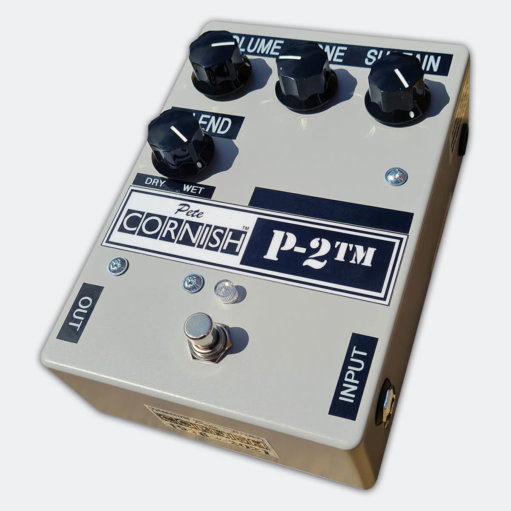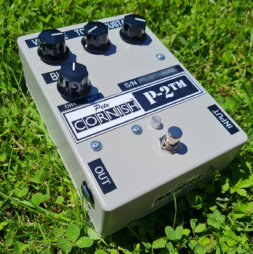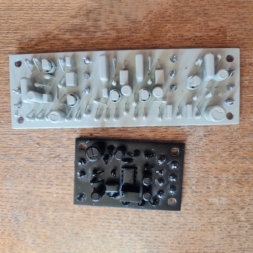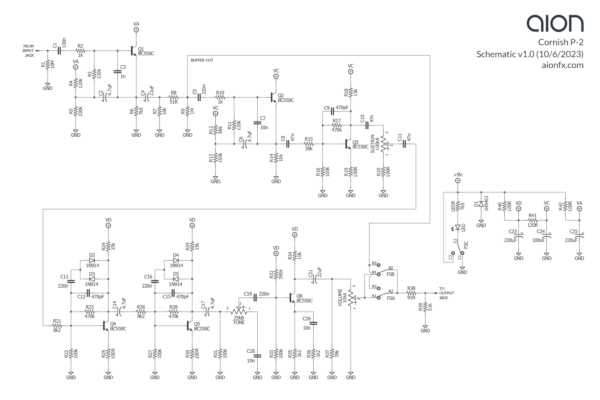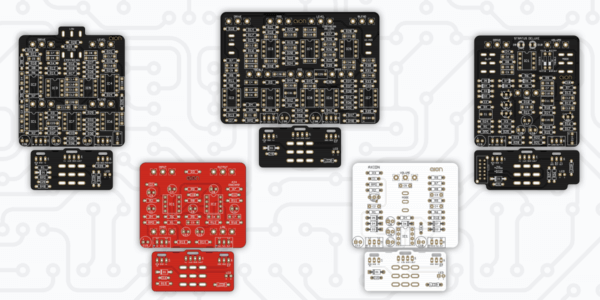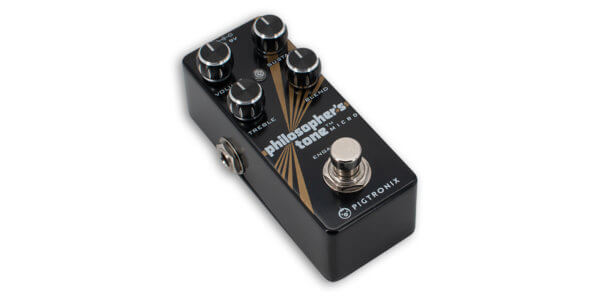
Tracing Journal: Cornish P-2
The second of three Cornish traces releasing today is the P-2. Here’s a demo of it in action:
The P-2 was one of Pete Cornish’s earliest designs, dating back to 1981 when it was created as an updated version of the P-1 that he had designed for David Gilmour. According to Kit Rae, the P-1 was essentially a straight clone of David’s favorite Big Muff (a Ram’s Head V2) with Pete’s namesake buffers added. The P-2 is smoother, less dark than the P-1, and has slightly more mids.
A similar circuit, the G-2, was created by Pete for Lou Reed in the 1990s, and became one of the first high-profile FSB traces. The trace revealed that it was based on the Big Muff, but departed in some areas, especially in the tone section. The PCB actually says “P-2/G-2”, so it has been known at least since the trace that they were similar. But the P-2 had never actually been taken apart to our knowledge.[1]
So while we didn’t expect any huge surprises, we did feel like it was worth the effort to add to the collection of Cornish traces, especially for what could be called his signature pedal.
Tracing photos
Note: The unit that we traced was a P-2 Blend. The blend circuit is on a separate PCB. We will be releasing the details of the blend circuit in some form soon, but for today we are just covering the P-2 circuit itself, which is the same as the non-Blend P-2.
Schematic
Analysis
As expected, our unit used the same PCB as the G-2, so we’re primarily dealing with a series of value swaps. It also uses the same treble-cut tone control as the G-2. That explains why the P-2 sounds like it has less of a mid-scoop than the P-1, since the scoop is primarily created by the classic Big Muff bass/treble tone control.
The G-2 is known (perhaps notorious) for being extremely bass-heavy. This is partly a function of its large coupling caps throughout, but in fact most of it comes from the 22uF capacitor off the emitter of the last transistor before the volume control (Q6 in our schematic). None of the coupling caps have been changed in the P-2, but the 22uF capacitor has been lowered to 10n, and all the bass-heaviness is gone.
Compared to the G-2, there are 16 parts substituted in total. Most of these substitutions increase the gain to a more typical Big Muff level, compared to the G-2 which is fairly low gain overall, and tweak the EQ for a different voicing. Some of the changes are inconsequential, e.g. reducing the 20k resistor in the buffer section to 10k (which may have been a tracing error in the original G-2).
Cygnus V2
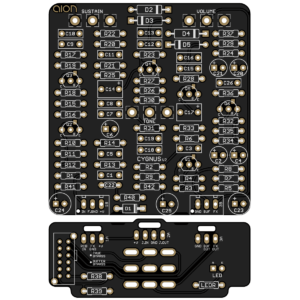 To go along with this trace, we’re releasing a new version of our Cygnus project. The major difference in the Cygnus V2 is the addition of an alternate film cap in parallel with the 22uF capacitor (C20), so you don’t have to jam a 5mm film cap into the 2mm pad spacing of an electrolytic in order to build the P-2. We ended up reworking the whole layout to make it easier to build, but that’s the only actual circuit difference between the two.
To go along with this trace, we’re releasing a new version of our Cygnus project. The major difference in the Cygnus V2 is the addition of an alternate film cap in parallel with the 22uF capacitor (C20), so you don’t have to jam a 5mm film cap into the 2mm pad spacing of an electrolytic in order to build the P-2. We ended up reworking the whole layout to make it easier to build, but that’s the only actual circuit difference between the two.
Disclaimer: Aion FX is in no way affiliated with Pete Cornish. Any trademarks are property of their owners and are used for comparative purposes only.
Notes & references
- There are a few DIY schematics and vero layouts of the P-2, but as far as we can tell, they’re all “speculative” in that they start with the G-2 or a Ram’s Head and attempt to back-fill the schematic based on the technical details from the Cornish website (for example, replacing the G-2’s germanium diodes with silicon, or adding the Cornish buffers to a standard Ram’s Head). We’ve never seen claims of a trace of the P-2. ↩
